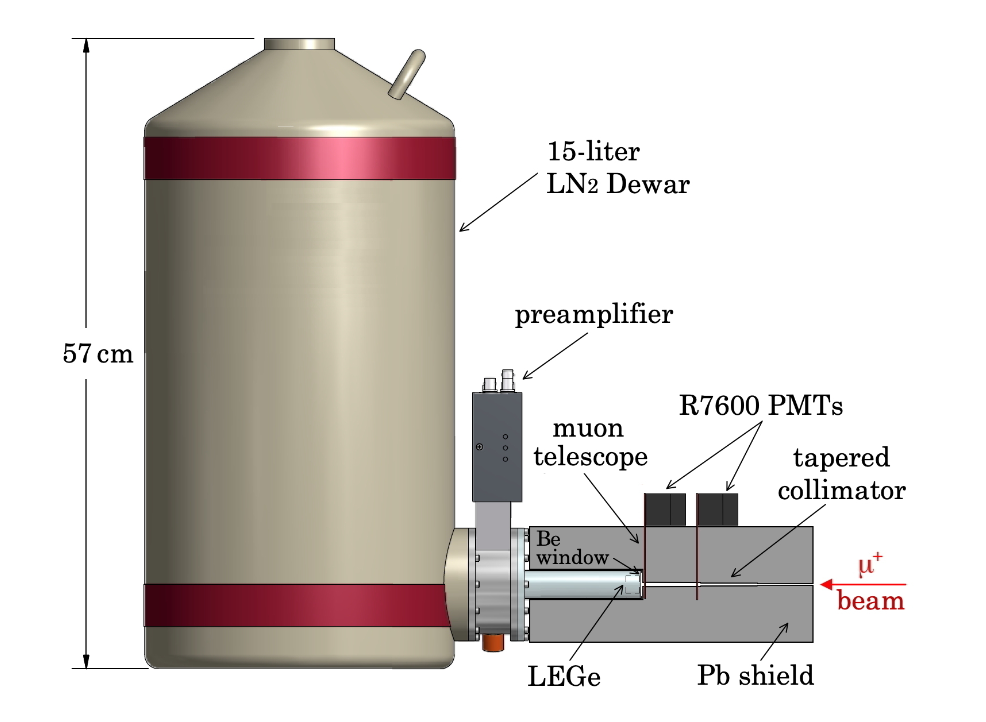A boson travelling slower than escape velocities of stars and galaxies
The emergence of detector technologies with sensitivity to lower energies and improved resolution invites a shift of emphasis in particle-decay searches for massive neutral bosons: the kinematic limit of these reactions remains an unexplored realm where cosmologically-relevant particles may be waiting to be discovered.
A case that illustrate this is the charged lepton flavour violating decay μ+ → e+X0 , that implies the presence of a slow neutral boson X0 capable of undergoing gravitational binding to large structures, and as such able to participate in some cosmological scenarios. Now, a team of researchers demonstrates 1 the feasibility of probing this process using a customized p-type point contact germanium detector.

The strongest present evidence for the incompleteness of the Standard Model (SM) arises from the observation of lepton-flavour violation in neutrinos, manifested through the phenomenon of neutrino oscillations. This neutral-particle precedent guarantees the eventual appearance of charged lepton flavour violation (CLFV). Striking evidence for μ+ → e+X0 would be provided by an anomalous peak embedded in the positron continuum from the dominating μ+ → e+νe ¯νμ.
Sensitivity to this signature was affected by the moderate energy resolution of the calorimeters employed in previous searches, typically inorganic scintillators. A p-type point-contact (PPC) germanium detector technology has been recently proposed to bypass this shortcoming while simultaneously entering the regime of boson emission speed that can lead to its gravitational binding to astronomical objects, in the guise of a dark matter.
The approach involves the stopping of low energy “surface” antimuons in an active “germanium beam dump”, leading to the detection of the antimuon and positron kinetic energies in rapid succession. The authors’ method involved high-throughput signal digitization followed by a sophisticated offline analysis that has allowed for a first exploration in this type of search of the few-keV positron energy range.
The modest energy characteristic of surface muons leads to their shallow implantation in the front surface of the germanium detector, where their decay at rest proceeds. In order to minimize backgrounds in the positron energy range of interest, it is imperative to reduce any in-flight degradation of the antimuon energy. This was accomplished by using a thin (25 μm) Kapton exit window on TRIUMF’s M20 beamline.
This corresponds to an X0 travelling slower than escape velocities of stars and galaxies. There is the possibility that one such X0, sufficiently long-lived and with rest mass close to that of the antimuon, could generate through its decay the positron injection energy characteristic of the 511 keV gamma emission from the bulge of the Milky Way. Its origin, an unresolved mystery spanning five decades.
Author: César Tomé López is a science writer and the editor of Mapping Ignorance
Disclaimer: Parts of this article may have been copied verbatim or almost verbatim from the referenced research paper/s.
References
- J. I. Collar, P. S. Cooper, and C. M. Lewis (2023) Search for a Nonrelativistic Boson in Two-Body Antimuon Decay Phys. Rev. Lett. doi: 10.1103/PhysRevLett.131.241802 ↩